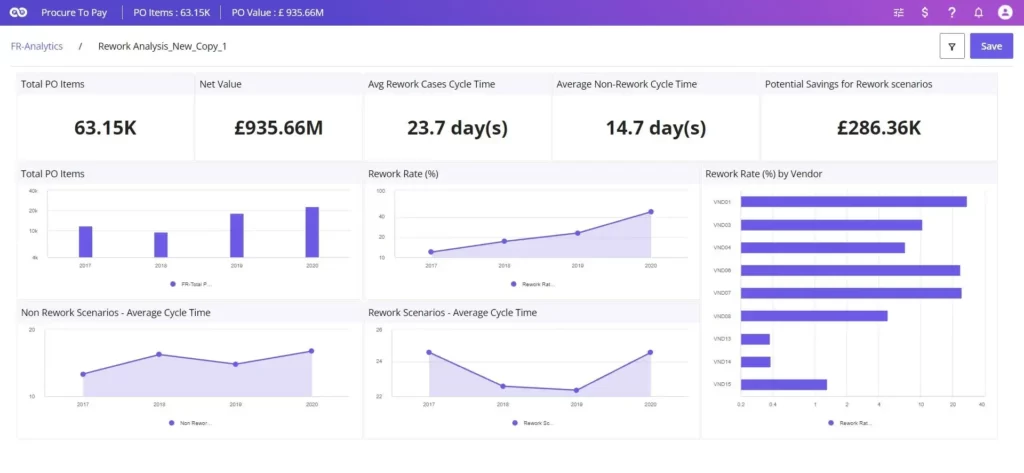FUTUROOT Analytics
Process Health at Glance
FUTUROOT Analytics provides the user with a holistic analytical view of a particular scenario or use case. Employing the feature, you can drill in, accessing trends, the number of cases impacted, and associated data at any process dimension level.
Dive Deeper & Analyse Reworks, Root Causes, Bottlenecks
FUTUROOT Analytics offers a complete overview of how a scenario operates under a given set of conditions.
For example, a typical rework scenario. It may show that a high number of purchase orders are being rejected by suppliers due to incorrect information, causing the process to go back to the procurement team for correction. Root Cause analysis may show that the rework is caused by a lack of training for the procurement team on how to complete purchase orders correctly.
Based on the analysis, the process owner can provide recommendations for reducing rework in the Procure-to-Pay process through additional training for the procurement team or implementing a system for checking the accuracy of purchase orders before they are sent to suppliers.

As for bottleneck analysis, the process mining solution will analyse for example a manufacturing company’s event logs, visualise the process flows and highlight the bottlenecks in real time.
This allows the company to see that a bottleneck is occurring at the assembly line due to a lack of resources, such as workers or machinery. The process analyst can then suggest solutions such as adding more workers or upgrading equipment to alleviate the bottleneck and improve overall efficiency.
Stay Ahead With Your Efficiency Improvement Initiatives
You can use the FUTUROOT Analytics feature to answer a variety of questions related to process performance and optimisation. Some of the questions would include
- What is the average time it takes to complete a specific process?
- What are the bottlenecks or inefficiencies in a process?
- How many instances of a specific process have been completed?
- How many instances of a specific process are currently active?
- What is the compliance rate of a specific process concerning established policies and procedures?
- How often do exceptions occur in a specific process and what is the root cause of these exceptions?
- How can a specific process be optimised to improve performance and reduce costs?
- What is the impact of changes made to a specific process on its overall performance?







